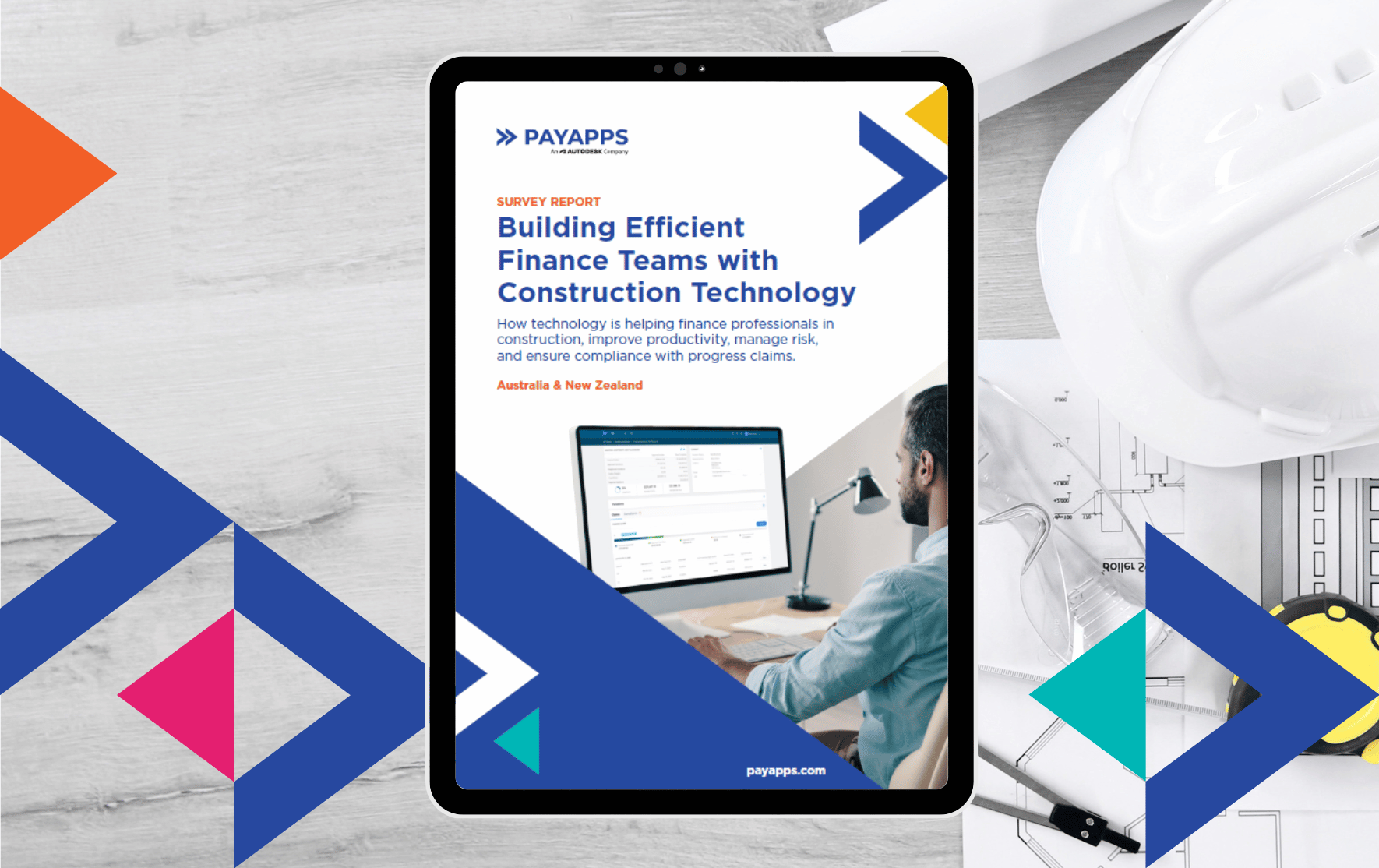Need to lodge a progress claim in construction? This guide is for you.
Managing progress claims in the construction industry can be tricky for contractors and subcontractors, largely due to the complexity, time, and size of construction projects.
Depending on the systems being used, it can be difficult to track where a claim or a construction progress payment is in the approval process. Additionally, managing contract compliance or payment security can present another set of challenges for payers and payees.
The good news is a progress claim in construction doesn’t have to be a burden when you’re armed with the right information.
What is a progress claim?
Progress claims refer to a collection of documents, forms and applications that request periodical payments, or a complete payment, for a contractor or a construction subcontractor in the building industry. The claim brings together documents and evidence in line with terms in the construction contract and asks for payment on the work that has been completed to date.
Once the project has reached an agreed time interval milestone, the progress claim can be made for financial compensation on the money that’s currently due. A progress claim’s validity is only as good as the contract that covers it. The right contract should include contractor payment terms along with the appropriate builder’s payment schedule.
How are progress claims used in the construction industry?
Building projects in the industry often involve long timeframes with incremental milestones, something that’s often reflected in progress payment construction contracts.
These progress claims will typically be used to provide remuneration to contractors and subcontractors to assist with cash flow throughout the job until completion using a construction payment schedule. These may be monthly intervals, for example, or they may be at specific stages of the agreed building work.
While every construction industry contract may include varying agreement terms, it should cover what documents need to be included for progress claims along with details on claim timings and payment deadlines. Make sure any contracts you sign include these details.
It’s important that progress claims are submitted by contractors and subcontractors in line with the contract terms and timing, and not before the correct time. This is to ensure contract compliance and to make sure the progress claim is valid.
What’s the difference between an invoice and a progress claim?
The way we understand invoicing in most industries is simple. An agreed amount of work is completed to a satisfactory level, the supplier is owed money, and an invoice for payment is sent to the customer. Payment then follows within an agreed period.
In the construction industry, payment processes usually differ from this well-understood approach. Here, participants in any given building project are required to lodge a progress claim for money owed, also known as a payment application in some jurisdictions. The progress claim is more complicated than a simple invoice, and the difference is one of detail.
Progress claims require multiple pieces of documentation to prove the legitimacy and validity – or proof – behind the request for payment. Let’s examine the items which typically need to be included with your progress claim.
What is a progress claim form and what should it include?
The centrepiece of a Progress Claim is the‘Progress Claim Form’ which focuses purely on the financial claim in terms of money owed concerning work performed so far. The form should usually be accompanied by further documentation. But before we examine that, let’s summarise the key components of a progress claim form itself.
The form should cover the following:
● The original total contract value amount for the entire project
● The total financial value of all work completed to date, along with any materials stored on-site to date
● Any amounts retained
● The total amount earned to date, against the total amount received to date
● The amount of money that’s currently due now
● And the remaining balance that will be left to complete the project
What further information or documentation should I include in a progress claim?
The key for requesting or indeed honouring a progress claim is clarity of information and compliance with legal requirements. As mentioned, the Progress Claim Form should be very clear on the work performed, specify the exact amount of money being claimed, detail the basis for this claim, and of course provide the right amount of evidence to accompany the progress claim.
As for that additional evidence, here is a list of documentation and information that you should include with the progress claim:
● The progress claim form – as detailed above
● A schedule of values – which covers all the work items for the project, matched against the value or cost for that item. For the progress claim, it should highlight this for that pay period in question
● Any approved change orders -which is a written agreement covering any agreed changes to the project, materials, schedule, work requirements and so on, between the employers/owners/architects and the contractors/subcontractors
● Visual documentation – which is added to effectively prove the work you are claiming payment for has been completed or that you are currently storing materials that have been paid for, including photos, diagrams, and drawings
● Relevant line waivers – which is like a receipt for payment in the construction industry, should be included here if they’ve been collected from suppliers and subcontractors and signed by the progress claim applicant
● The latest daily report – which provides further evidence with details on how the project is progressing to that particular point in time
● Supplier invoices – for materials supplied in this progress claim time period, which have not yet been paid but which determine how much you owe and need to pay
● Receipts – as above for materials you have purchased in the progress claim time period but which you have already paid
How to time the submissions?
As you can see, there is a fair bit to consider with lodging best practice progress claims, but they become simpler and more routine once you get used to doing them, or when you’re able to start using a platform that helps bring all the administration all together more easily.
Given the detail required, most parties in the construction industry tend to submit progress claims monthly. Each claim is unique to each project and its current status, which means every claim needs individual and detailed attention. This fact alone determines the trend toward monthly submissions at most, but you should always be guided by the terms of your contract which may stipulate more exact timing for lodging your progress claim.
Common progress claim mistakes you can avoid.
Following this guide should keep you on the right track, but it’s certainly worth avoiding the most common mistakes people make with progress claims if you want to keep relationships intact while avoiding delays or cash flow issues. The most common mistakes are:
● Not sending progress claims on time – this sounds obvious enough, but the timing of your progress claims should always be adhered to if it’s included in your contract.
● Failing to follow up on submissions – sometimes documentation gets misplaced so if payment doesn’t come through on time, follow up with a phone call or email.
● Forgetting to include lien waivers, change orders or schedule of values – this kind of evidence is crucial, showing professionalism and ensuring the project owner can correctly pay people.
● Skipping the evidence of performed work – the visual documentation (photos, drawings) and daily construction reports are integral parts of your progress claim bundle in terms of evidence, without these payments can be unnecessarily held up.
Is Payapps the best solution to managing my Progress Claims?
Payapps is a simple, intuitive and easy-to-use online software platform that helps you manage the entire progress claims process up and down the construction supply chain.
Whether you are submitting or approving claims, Payapps empowers you to either assess and approve claims or to prepare, submit and track your progress claims with much greater ease than compared with using a manual process.
Payapps automatically brings forward and reconciles previously approved claims, so you don’t have to waste time working in spreadsheets or duplicating last month’s claims. You can quickly and easily manage claim variations by uploading variations against open contracts straight into the platform, removing the need for additional spreadsheets. And you can also quickly add supporting evidence like photos or other documentation to speed up claim approval.
Here are a few summarised benefits of the Payapps platform:
● Improves collaboration across the supply chain
● Full transparency across outstanding and approved claims
● Simple onboarding and connects with existing ERP/accounting software in a couple of clicks
● Reduced duplicate data entry/manual handling of data
● Adherence to compliance requirements with a single source of truth
● Intuitive and easy-to-read dashboards and contract breakdowns, including automatic tracking of variations and retention
● Subcontractors can be using the system in as little as 24 hours – very fast to learn
Ready to learn more? Discover how the Australian business City Circle Group uses Payapps to easily enter and send conforming payment claims while minimising the potential for human error. Watch the video here!







